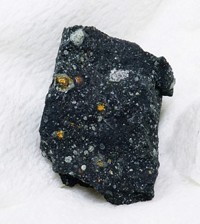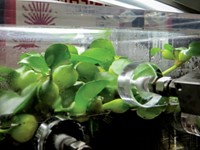Advertisement
Grab your lab coat. Let's get started
Welcome!
Welcome!
Create an account below to get 6 C&EN articles per month, receive newsletters and more - all free.
It seems this is your first time logging in online. Please enter the following information to continue.
As an ACS member you automatically get access to this site. All we need is few more details to create your reading experience.
Not you? Sign in with a different account.
Not you? Sign in with a different account.
ERROR 1
ERROR 1
ERROR 2
ERROR 2
ERROR 2
ERROR 2
ERROR 2
Password and Confirm password must match.
If you have an ACS member number, please enter it here so we can link this account to your membership. (optional)
ERROR 2
ACS values your privacy. By submitting your information, you are gaining access to C&EN and subscribing to our weekly newsletter. We use the information you provide to make your reading experience better, and we will never sell your data to third party members.
Biological Chemistry
Origin-of-Life Surprises
Reexamination of some 50-year-old vials from Stanley Miller’s experiments turns up new results
by Carmen Drahl
March 28, 2011
| A version of this story appeared in
Volume 89, Issue 13
A new analysis of pioneering origin-of-life chemist Stanley Miller’s work suggests Miller, who shot to fame for producing amino acids in a flask mimicking the primeval Earth’s atmosphere, can also be held up as a model of scrupulous record keeping (Proc. Natl. Acad. Sci. USA, DOI: 10.1073/pnas.1019191108). A research team including some of the late Miller’s former students has reexamined samples from his carefully archived collection—which ended up at his last academic home at the University of California, San Diego—as they initially did three years ago (C&EN, Oct. 20, 2008, page 12). The latest samples had never been analyzed and came from a 1958 experiment in which Miller subjected a mixture of gases, including hydrogen sulfide, to an electric spark. Henderson J. Cleaves of the Carnegie Institution of Washington, Eric T. Parker and Jeffrey L. Bada of Scripps Institution of Oceanography, and colleagues found the amino acid methionine and other sulfur-containing compounds in the product mixtures, making the 1958 work the earliest synthesis of organosulfur molecules in an origin-of-life experiment. The gas mixture Miller used might not reflect primitive Earth’s atmosphere, but the experiment could help scientists understand how volcanoes or meteorites shaped prebiotic reactivity, Cleaves says.







Join the conversation
Contact the reporter
Submit a Letter to the Editor for publication
Engage with us on Twitter